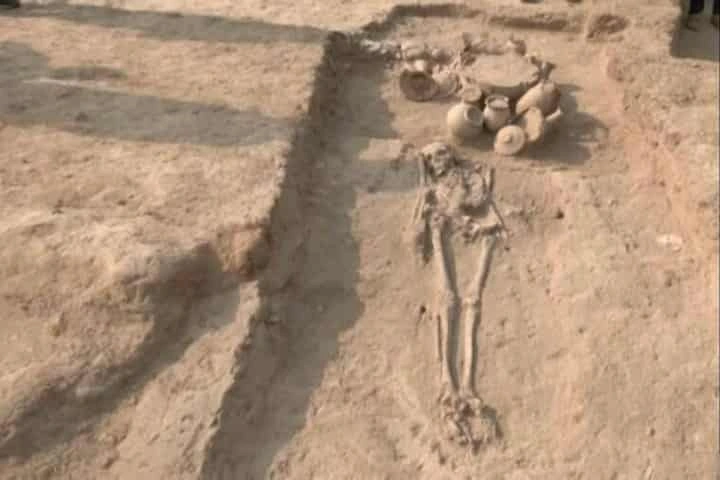At the end of the three-month-long phase of excavations by the Archaeological Survey of India at the 5,000-year-old Harappan site of Rakhigarhi in Haryana has uncovered important pointers about the civilisation. These include the structure of some houses, system of drainage, lanes and wide roads and jewellery made of copper and gold and a likely jewellery-making unit.
Besides this, the excavation which has been in progress in three of the total seven mounds at the site located at Hisar district of the State, also brought to light gold and copper jewellery pieces, earthen pots and seals and terracotta toys.
Informing that the diggings were carried out for the first time on Mound No.3, Sanjay Kumar Manjul, Director-General ASI said that it revealed “an aristocratic settlement”. He added more excavations needed to be done to establish this. A burnt-brick wall in the same Mound also suggested a walled settlement. Artefacts found here also include terracotta unbaked sealing with Harappan script and elephants.

A large amount of waste of semi-precious stones including carnelian and agate have been discovered at Mound 1 besides proof of street planning.
In this round, skeletons of two females buried with a large quantity of pottery and jewellery like agate beads, shell bangles and jasper were found. The officials informed that DNA samples have been sent for further study.
Talking to the media, Manjul said: “We are still excavating and finding pieces of evidence to trace back the cultural and economic roots of the area. From the broken pottery and metal items, it can be said that there seems to be a continuity of the civilisation of the early Harappan period dating back to 7,000 years ago and the mature Harappan period around 2,600 BCE.”
Rakhigarhi is located 150 kilometres from Delhi and it was first excavated by the ASI in 1998-2001 and later from 2013 to 2016 by Deccan College.




















